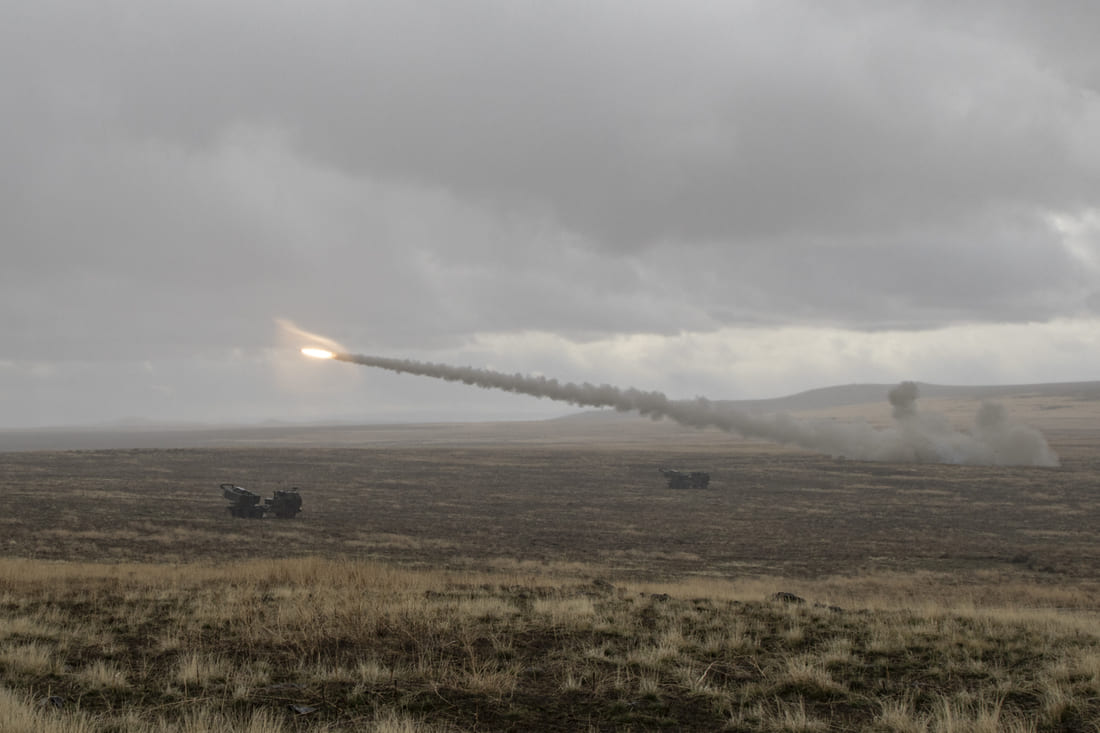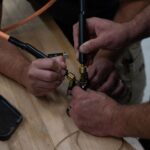As of 28 October 2025, Castelion holds U.S. Navy and U.S. Army awards to integrate its Blackbeard hypersonic weapon on operational platforms, with live-fire events in scope. A Navy study conducted in 2024 defined strict size and weight limits for an air-carried anti-surface version with a 2027 timeline.
Navy and Army integration contracts for the Blackbeard hypersonic weapon
Castelion announced on 24 October that it secured integration contracts supporting operational Navy and Army platforms. The release describes Blackbeard as a long-range hypersonic strike weapon designed for mass production once integration and testing complete. The company did not name specific aircraft or launchers in that notice.
Independent reporting the same day detailed Pentagon backing for a mobile-launcher path and emphasized affordability as a primary driver. The planning target points to large-scale output and a unit price in the hundreds of thousands of dollars after factories reach full-rate production. That figure sits far below boost-glide systems that have dominated the hypersonic portfolio to date.
Army materials and trade coverage show a near-term ground-launch route that uses existing launch families to compress timelines. The effort aligns with the High Mobility Artillery Rocket System interface and ties to the emerging Common Autonomous Multi-Domain Launcher for distributed firing nodes. Documentation and press accounts also reference approximately twenty-five million dollars requested in the fiscal 2026 cycle to carry Blackbeard ground launch through integration and flight trials.
According to industry sources, the services structured the work as phased integration with explicit decision points. That lets teams test subsystems, validate models against instrumented flights, and hold cost if redesigns appear. Castelion’s public notes describe frequent flight activity with low-cost test articles to mature propulsion and guidance. The company frames those vehicles as tools for learning rather than final warshots, which fits the early integration focus.
Defense officials confirm the Navy portion aims at air, surface, and sub-surface options. Surface and sub-surface paths would require canister geometry, thermal control, and interfaces that pair with shipboard launch and combat systems. Air launch now draws distinct attention because the Navy cancelled a prior hypersonic anti-surface program and still needs a high-speed carrier-suitable strike option this decade.
ONR air-launched anti-surface envelope and carrier aircraft fit
Separate Navy study has already set hard constraints for a possible air-carried anti-surface weapon. In February 2024, the Office of Naval Research funded an initial trade study that capped one line at 212 inches in length with an on-aircraft weight limit of 2,750 pounds. The study also scoped a second line at seven inches in diameter and 144 inches in length for an air-to-air configuration. The planning baseline called for more than two hundred production rounds for each line by no later than 2027.
The program language does not label those weapons as Blackbeard outright. The anti-surface envelope matches carrier aviation realities, including bring-back margins, deck handling, and widely used pylon stations on the F/A-18E/F. According to defense officials, any candidate in that class must clear mission computer integration, survive the electromagnetic environment of the flight deck, and prove control authority across climb, cruise, and terminal phases at very high dynamic pressure. Those demands apply whether the design uses air-breathing propulsion or a non-breathing boost with glide or quasi-ballistic flight.
Testing disclosed by the company has centered on ground shots to accelerate subsystem learning and reduce cost per data point. That approach yields flight-quality telemetry for guidance filters, actuators, and seeker behavior at relevant speeds, then lines up with platform teams for formal integration trials. The October awards add service range access and operational platform work packages to take those steps under Navy and Army oversight.
According to industry sources, early air integration would most likely focus on the Super Hornet due to fleet density, cleared pylons, and the volume of ongoing stores software work. Other aircraft have different carriage limits and mission systems that would add time. The F/A-18E/F already carries very large stores, which shortens several planning lines for any future heavy hypersonic round on the flight deck. Imagery and official signaling across 2024 and 2025 showed the Navy flying an air-launched Standard Missile family member on the type, which proves carriage and release of an outsized store inside carrier cycles.
HALO cancellation and interim Navy strike options
The Navy ended its Hypersonic Air-Launched Offensive Anti-Surface Warfare effort in late 2024 after a review of cost and schedule risk. Public comments in April 2025 confirmed the cancellation and emphasized an affordability reset for any follow-on air-launched anti-surface requirement. “The Navy cancelled the solicitation for the Hypersonic Air-Launched Offensive Anti-Surface Warfare (HALO) Engineering and Manufacturing Development effort in fall 2024 due to budgetary constraints that prevent fielding new capability within the planned delivery schedule,” Capt. Ron Flanders said at the time.
Navy aviation has moved forward with other large weapons while revalidating a hypersonic requirement. The AIM-174B, an air-launched configuration of the Standard Missile family, now appears on Super Hornets during high-visibility events. The round serves primarily as a very long-range air-to-air option. Its presence on flight decks demonstrates that very large stores can be carried and released safely inside the carrier cycle, which helps future integration of a heavy hypersonic weapon.
Program managers now balance three tracks that serve different mission needs. LRASM continues on an upgrade path for stealthy subsonic maritime strike. AIM-174B covers extreme-range air-to-air tasks and offers a pathway for further software and handling experience with heavyweight stores. An affordable hypersonic anti-surface option would add a high-speed punch from carrier aircraft without creating untenable sustainment costs. The Castelion integration awards address that third track by bringing a candidate into platform work under firm size and weight gates.
Defense officials confirm that cost control will decide whether an air-launched hypersonic option proceeds to production. HALO’s cancellation underscored the risk when price curves and delivery schedules diverge from the plan. A design that meets the ONR envelope and hits a sub-million-dollar unit cost at scale would answer the affordability test that drove the earlier decision.
Ground launch plans and production scale for Blackbeard GL
Army planning gives Blackbeard a concrete near-term route through ground launch. Service budget references and reporting place integration on the HIMARS family with a phased sequence that includes platform fits, proof events, and an initial batch for flight trials. The same materials associate the effort with the Common Autonomous Multi-Domain Launcher to support future distributed operations. Coverage of the October announcements also cited a fiscal 2026 request of roughly twenty-five million dollars tied to Blackbeard ground-launch integration.
Testing shown so far has used palletized launch hardware and low-cost vehicles to ground performance models in measured data. That test philosophy supports early Army timelines and produces telemetry that any later air-carried variant will need. Seeker windows, guidance filters, and actuator authority can be tuned against repeated flights at relevant speeds before carriage and release trials start from fleet aircraft.
Surface and sub-surface naval use remains plausible if propulsion choice and thermal protection allow a canistered path. A surface variant would require interfaces that fit shipboard launch control and combat systems. A submarine path would add limits on canister geometry and boost profiles that respect underwater launch dynamics. According to industry sources, those branches depend on final motor selection and terminal seeker performance in heavy sea clutter, which remains undisclosed.
Production scale sits at the center of the Blackbeard concept. Public reporting ties full-rate output to thousands of rounds per year with a target unit cost in the hundreds of thousands of dollars. That level would change sortie planning and reload cycles for ships, squadrons, and HIMARS batteries, and it would reshape procurement by trading a smaller number of exquisite rounds for deeper magazines of affordable shots. Affordability claims will meet their first real test when the integration work transitions from demonstrations to recurring orders.
Castelion emphasizes vertical integration of propulsion and guidance to control price and schedule, plus frequent flight testing to shorten design loops. The October awards bring service test ranges and platform teams into that process, which should move telemetry and model-validation from company flights into operational envelopes. Our analysis shows a likely sequence that starts with Army ground-launch flights to mature seekers and control laws, then advances to carrier integration once a stable configuration fits the published envelope and clears stores and software checks.
Program risk is visible. Delivery dates can slip if thermal-protection materials lag or if actuators fail at high dynamic pressure. Unit prices can drift if rework rates rise during early lots. The Army plan includes off-ramps to manage those risks through phased decisions. The Navy’s focus on affordability provides a clear yardstick for any air-launched decision.
If live-fire events confirm guidance in clutter and measured kinematics meet mission needs, production can follow under existing carrier operations. If results fall short, the fleet continues LRASM improvements and keeps training with AIM-174B while it reassesses an air-launched hypersonic requirement.
REFERENCE SOURCES
- https://www.castelion.com/news/castelion-awarded-integration-contracts/
- https://www.reuters.com/world/us-military-takes-steps-adapt-new-hypersonic-weapons-mobile-launchers-2025-10-24/
- https://www.twz.com/air/u-s-navy-air-launched-version-of-cheap-blackbeard-hypersonic-missile-hinted-at
- https://govtribe.com/opportunity/federal-contract-opportunity/navy-scalable-and-affordable-strike-n0001423sb001
- https://www.highergov.com/contract/N0001424C1511/
- https://breakingdefense.com/2025/10/castelion-wins-first-platform-integration-contracts-for-blackbeard-hypersonic-missile/
- https://www.navalnews.com/naval-news/2024/07/u-s-navy-confirms-sm-6-air-launched-configuration-is-operationally-deployed/
- https://www.sofx.com/us-navy-cancels-halo-hypersonic-missile-program-due-to-budget-limits/
- https://www.shephardmedia.com/news/naval-warfare/halo-programme-decommissioned-by-us-navy-in-favour-of-lrasm-upgrades/
- https://www.businessinsider.com/new-us-air-air-missile-closes-answers-china-weapons-2024-9



